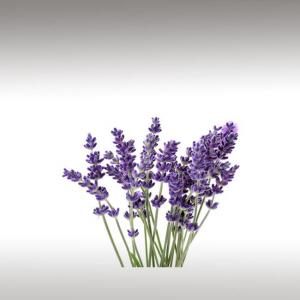
LAVENDER DISTILLATE (LAVANDULA ANGUSTIFOLIA) - HERBAL DISTILLATES

BASE / GENERAL DATA
Information submited: March 13, 2014 Modified: July 3, 2018 By: OperaDreamhouse
Organic Lavender Hydrosol smells slightly different from the herb and essential oil. It is lighter and somewhat earthier in fragrance and doesn't possess the camphorous note that many Lavender essential oils have.
Lavender (Lavandula Angustifolia) is a strongly aromatic shrub with pale green, narrow, linear leaves and violet - blue flowers. Native to the low mountains of the Mediterranean region, now is cultivated all over the world for its essential oil.
The influence of the time of distillation on the content and composition of the essential oil isolated from lavender (Lavandula Angustifolia) by steam distillation was investigated. The maximum essential oil percentage (2%) was obtained after 2 hours of distillation, while the minimum essential oil percentage (1%) was obtained after 40 minutes of distillation.
Lavender oil is easily extracted from the flower heads using steam distillation. The best effect of distillation time on Lavender essential oil yield and composition when extracted from dried flowers.
If the time of distillation is too short, higher boiling point compounds may be lacking. When the time of distillation is too long, the oil may have unpleasant smell.
According to Pitman, nearly 75% of the total oil yield comes in the first 25 minutes of distillation, to give a commercial grade Lavender oil. Obtaining of the othermolecules, like coumarins, take another 50 - 80 minutes of distillation.
Steam distillation is a simple method of universal application and the inexpen - sive equipment. Unfortunately, during this process molecular rearrangements, hydrolysisof double bonds and de - esterification of esters to alcohols and carbo - xylic acids may occurs.
In case of Lavender oil, the levels of linalool and linalyl ace - tate are key determinants of the overall fragrance of the oil. Linalool is sweeter, but the odour of its ester, linalyl acetate is more refreshing. The linalool to linalyl acetate ratio may change in different distillation times and may affect the final odour of the oil.
According to literature data, in high quality Lavender oil, the ratio of linalyl acetate to linalool should be higher than one. Commercially produced Lavender oil is often distilled for only 15 minutes at a very high temperature and under very high pressure. Although the oil is easily sold, it is of very poor quality. In order to make it smell like the genuine plantfragrance, synthetic linalyl acetate is often added.
Distillation is conducted by boiling the water beneath the charge with steam brought from a boiler to a coil, the top of which must be at least 1 foot beneath the bottom of the charge chamber. The oil flow from the condenser must be watched for, and complete distillation of the charge usually takes about six hours from commencement of the flow.
The yield of the oil is apt to vary considerably from season to season, as the age of the bushes and the weather will affect both the quantity and quality of the product. The amount of sunlight in the weeks before distillation has a great influence: the best oil is obtained after a hot, droughty season, heavy rains detract from the yield.
The Distillate should be left for several months to become quite clear and transparent before it is offered for sale. At Hitchin, it has been calculated that 60 lb. of good flowers will yield on the average 16 fluid ounces of oil.
Growers not doing their own distilling, but preparing the flowers dry for market, should spread the stalks out in the open, on trays or sieves, in a cool, shady position, out of the sun, so that they may dry slowly. The trays should be raised a few feet from the ground, to ensure a warm current of air, and the stems must not be allowed to touch, or the flowers will be spoilt by the moist heat engendered. They must be taken indoors before there is any risk of them getting damp either by dew or showers. When dry, they should be stored in a dry place and made up into bundles. The flowers may also be stripped from the stalks and dried by a moderate heat. They have a greyish-blue colour when dried.
Lavender Hydrosol can be used directly on the skin. It can also be used as part or all of the water phase for nonionic or cationic creams and lotions, as well as in room and body sprays. This is is a naturally preserved product, but it is for external use only.
The flowers and leaves are used as an herbal medicine, either in the form of Lavender oil or as an herbal tea. The flowers are also used as a culinary herb, most often as part of the French herb blend called herbes de Provence.

SPIRITUAL PRACTISES DATA

MEDICINE / HEALTH DATA
Information submited: July 3, 2018 By: OperaDreamhouse
The Lavender Water will assuage the pain of the wounds and bruises of children (and adults as well). He will calm down and raise your mood.
You can add Lavender Hydrolate to baby baths, to wash the baby's underwear. A bath with Lavender Water and you can provide a quiet and deep night's rest.

BEAUTY / COSMETICS DATA
Information submited: July 3, 2018 By: OperaDreamhouse
pH

FOOD / COOKING DATA
COMMENTS
No comments.
Newest mixtures containing Lavender Distillate (Lavandula Angustifolia):

Foot fungus treatment recipe
April 22, 2015


